Introduction
A city of contrasts—that’s the first thing you notice. Kuala Lumpur is a place where you can sip coffee in a chic, modern café. Step outside, and you will be greeted by the sight of tall, gleaming buildings piercing the sky. Stroll a few streets down, and you will find yourself surrounded by centuries-old temples, busy night markets, and the intoxicating aroma of street food.
For me, Kuala Lumpur holds a particularly special significance. Kuala Lumpur was part of my final journey before the COVID-19 pandemic erupted, leading to a strict three-year zero-COVID lockdown in China. During that period, I could not travel anywhere, making my memories of this vibrant and culturally rich city all the more vivid. As a result, my time in Kuala Lumpur has stayed with me, not just as a destination but as a symbol of freedom, exploration, and the joy of travel.
In this post, I’ll highlight some of the must-see attractions, culinary delights, and personal experiences in Kuala Lumpur, making it an ideal guide for first-time visitors. You’ll get a glimpse of the city’s cultural diversity, its towering modern marvels, the bustling energy of its food streets, and the vibrant atmosphere of its festivals. From iconic landmarks like the Petronas Towers to the tranquil beauty of hidden temples, I hope to convey this city’s full range of experiences.
So, whether you’re planning your trip or simply curious about this fascinating city, I invite you to explore Kuala Lumpur at your own pace. I’ll share insights that go beyond the surface, helping you connect more deeply with the sights, sounds, and flavours of this dynamic destination. Let’s dive into a city where past and present, tradition and modernity, stand side by side in a stunning blend.
Location: Where is Kuala Lumpur?
Nestled in the heart of Southeast Asia, Malaysia is a dynamic country divided into two main regions: Peninsular Malaysia and East Malaysia on the island of Borneo. Kuala Lumpur, or “KL” as it’s commonly known, is located in Peninsular Malaysia and serves as the nation’s capital and cultural epicentre.
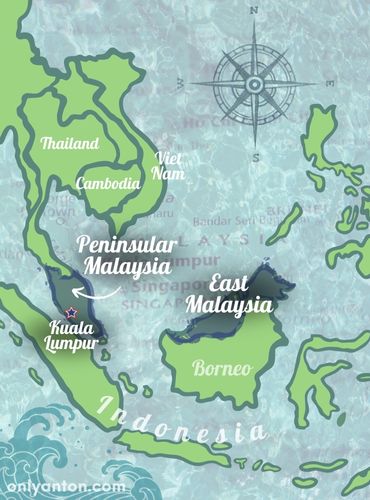
Strategically positioned at the crossroads of major international trade routes, KL is more than just a political and economic hub. It’s a multicultural metropolis that acts as a gateway to the country’s rich blend of Malay, Chinese, Indian, and indigenous traditions. The iconic Petronas Towers dominate its skyline, while its streets buzz with the diversity of its people and their customs.
Kuala Lumpur’s status as an international city makes it a prime destination for travellers. It offers a fascinating mix of history, modernity, and multiculturalism. Its well-connected transportation network, including the Kuala Lumpur International Airport (KLIA), makes it an ideal starting point for exploring Malaysia and the wider region.
Cultural Confluence of Faiths and Traditions
Kuala Lumpur is an amalgam of cultures, faiths, and traditions. As a melting pot of Malay, Indian, Chinese, and Thai influences, the city’s pluralistic society is a testament to centuries of coexistence. These diverse communities have shaped the city’s architecture, cuisine, and festivals, creating a uniquely harmonious environment. One of the most striking aspects of Kuala Lumpur is its religious diversity. You can visit a Hindu temple, a Taoist shrine, and a mosque, all within the same district, highlighting the city’s spirit of acceptance and mutual respect.
Sri Maha Mariamman Temple
My visit to the Sri Maha Mariamman Temple was particularly meaningful. I have a personal affinity for Ganesha, the elephant-headed deity known as the Remover of Obstacles. This temple is the oldest functioning Hindu temple in Kuala Lumpur. It is a serene yet bustling place, filled with the sounds of bells and the aroma of incense. The temple’s vibrant gopuram (entrance tower) and intricate sculptures depict a pantheon of Hindu gods, making it a visual feast for visitors.
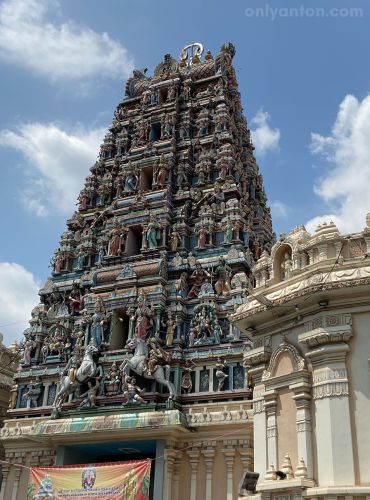
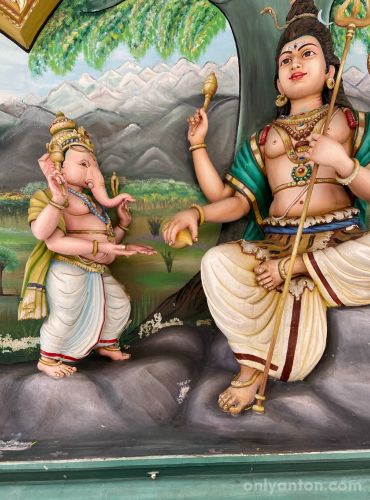
Ganesha is a deity rich in symbolism. His large ears urge us to listen more, while his small eyes remind us to focus and concentrate. The large head represents wisdom and intellect. One of his most curious attributes is his broken tusk—a symbol of retaining the good while discarding the bad. Legend has it that Ganesha broke his own tusk to use as a pen while transcribing the Mahabharata. Thus, the broken tusk also symbolizes sacrifice and dedication to one’s task.
Guan Di Temple
Just across the street from the Sri Maha Mariamman Temple is the Guan Di Temple. This is a Taoist temple dedicated to the warrior god Guan Di. The proximity of these two spiritual landmarks exemplifies Kuala Lumpur’s cultural harmony. The temple’s interior is awash with colour—red lanterns, gilded statues, and ornate carvings. The air is thick with the scent of incense smoke drifting gently through the hall. Visitors can admire the peaceful atmosphere and observe devotees making offerings. Such an experience adds yet another layer to the city’s multifaceted identity.
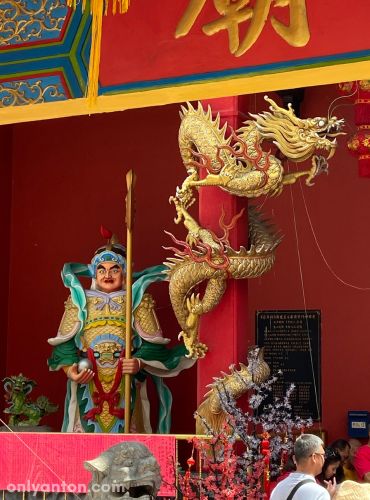
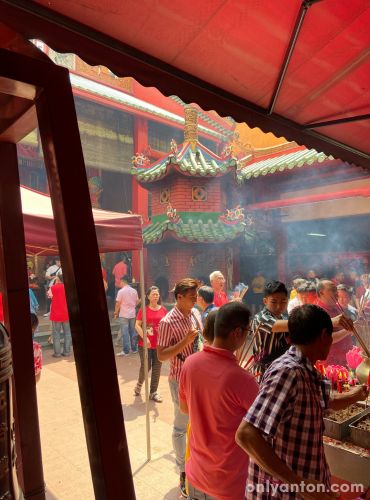
Personal Tip
Compare the aesthetics and practices of the two temples. Notice how the intricate carvings of Hindu deities contrast with the bold, martial imagery of Guan Di. This contrast offers unique insight into the city’s cultural coexistence and invites a deeper reflection on how distinct faiths can thrive side by side.
KL’s Modern Marvels
Kuala Lumpur is known for its impressive blend of modern and traditional architecture. Nowhere is this more evident than in its gleaming skyscrapers and sleek urban parks. Among the modern marvels defining the city’s skyline, the Petronas Towers symbolize Malaysia’s ambition and progress. The surrounding area, with its luxury shopping centre and tranquil park, offers a balance between urban excitement and serene leisure.
Petronas Towers
The Petronas Towers are perhaps the most recognizable landmarks in Kuala Lumpur, dominating the city’s skyline. The structure rises to a height of 452 metres. These twin towers are architectural masterpieces that reflect Malaysia’s commitment to modernity while incorporating elements of Islamic design. I had the chance to visit the towers and enjoy a refreshing beer at their base. It was a simple pleasure that stood in contrast to the grandeur and elegance of the towers soaring above me.
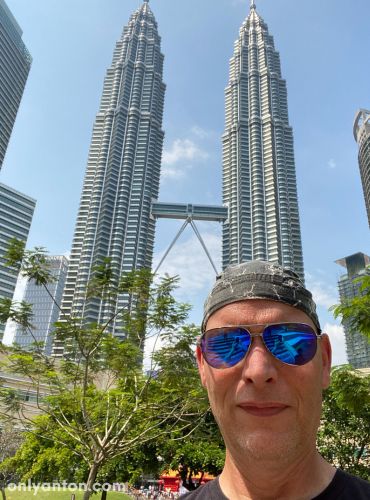
One of the highlights for visitors is a trip to the Skybridge on the 41st and 42nd floors. The bridge offers a breathtaking panoramic view of the city. I highly recommend timing your visit for sunset to see the city transition from day to night, when the buildings start to shimmer against the darkening sky. Tickets can sell out quickly, so plan your visit in advance.
Suria KLCC
Located at the base of the Petronas Towers is the Suria KLCC. It is a luxury shopping mall that caters to visitors looking for high-end brands, unique Malaysian souvenirs, or just a place to cool off and relax. The mall is more than just a shopping destination. There is a range of attractions, including an art gallery, an aquarium, and a concert hall, making it an entertainment hub in its own right. The mall is an excellent spot to pause during your visit. Indulge in some retail therapy or take in the lively atmosphere.
Personal Tip
If you’re visiting on a rainy afternoon, which is quite common in KL, Suria KLCC offers a perfect indoor retreat with plenty to see and explore.
KLCC Park
Just behind the Petronas Towers lies the KLCC Park. The sprawling 50-acre green space was designed as a refuge from the surrounding skyscrapers. The park’s walking paths, ornamental fountains, and lush greenery make it a wonderful place for a leisurely stroll or a moment of reflection. I recommend visiting in the evening to catch the Symphony Lake Water Show. Jets of water dance to the rhythm of music as they are illuminated by a spectrum of colourful lights. The water show, set against the backdrop of the Petronas Towers, provides a relaxing end to an afternoon of sightseeing and offers a visually stunning contrast to the teeming city.
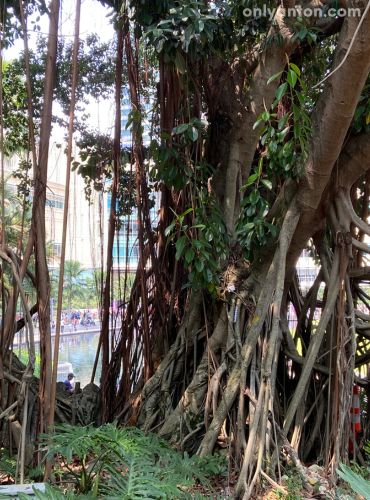
KLCC Park and the Petronas Towers embody Kuala Lumpur’s duality. It is a city that merges cutting-edge modernity with an appreciation for tranquillity and beauty. This area is a must-visit for travellers seeking a glimpse into the soul of Malaysia’s capital.
A Taste of Old Kuala Lumpur
Kuala Lumpur may be a modern metropolis. However, remnants of its historic past can still be found in its energetic markets and old streets. Two places that capture the essence of “old KL” are the Central Market and Jalan Petaling. These lively areas are not just about shopping or eating. They’re windows into the city’s cultural and historical soul.
Central Market
The Central Market has transformed over the years from a simple wet market into a thriving cultural and shopping destination. The market was originally established in 1888 as a place where locals bought fresh produce. Today, it’s known for its art stalls, handicrafts, and souvenirs. With its charming Art Deco architecture, the building itself is a nostalgic reminder of Kuala Lumpur’s colonial-era heritage. It is a melting pot of Malaysia’s artistic expressions, where you can find intricate batik textiles, traditional wood carvings, and colourful ceramics.
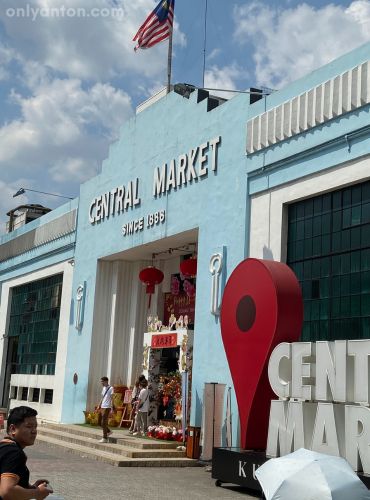
While exploring the packed stalls, my travel companion decided to get her hands decorated with henna tattoos, an art form commonly associated with Indian culture. Watching the intricate patterns take shape, I couldn’t help but be mesmerized by the steady hand of the artist. As the henna dried, we wandered through the rest of the market, taking in the vibrant atmosphere and soaking in the blend of Malaysian, Chinese, and Indian influences that make this place special.
Personal Tip
Visit Central Market early in the morning to avoid the worst of the crowds. An early visit will allow you to appreciate its architecture and get a feel for its original charm before the hustle and bustle begin. You’ll also have more time to talk to the vendors, many of whom have fascinating stories about their crafts’ origins.
Jalan Petaling
Just a short walk away is Jalan Petaling, better known as Petaling Street, which lies at the heart of Chinatown. This bustling street is a lively hub of Chinese food culture. It is one of the best places in the city to experience authentic street food. The area has a rich history tied to the Chinese diaspora, who settled in Malaysia and brought unique traditions and cuisine that have become deeply ingrained in the country’s cultural fabric.
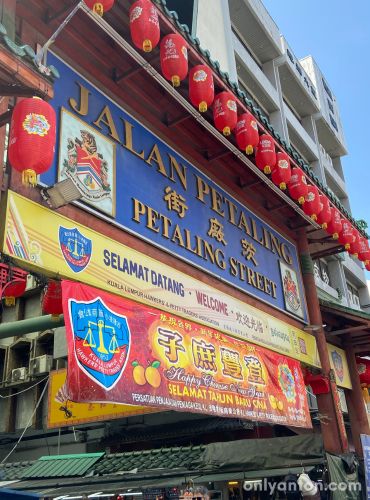
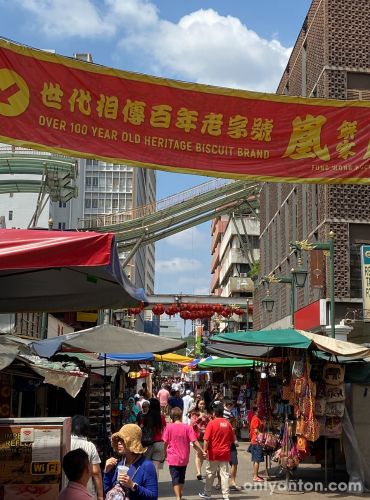
During the day, Petaling Street is a buzzing market selling everything from imitation designer goods to herbal medicines. But it truly comes alive at night. The food stalls light up and the aroma of freshly cooked dishes fills the air. Some must-try delicacies include Hokkien Mee, a dish of thick yellow noodles stir-fried in dark soy sauce. Various fresh fruit stalls offer everything from juicy dragon fruit to rambutan. The energy of the street, with its lantern-lit alleyways and lively vendors, makes it a sensory experience like no other.
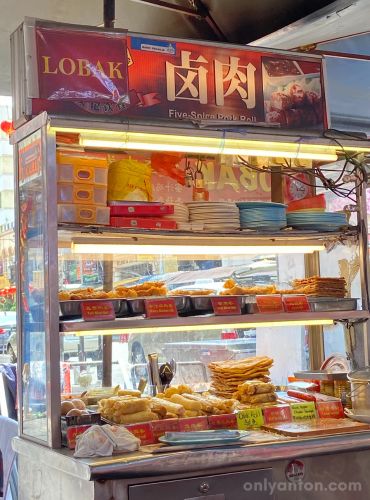

Personal Tip
To get the most out of Petaling Street, visit both during the day and at night. In the daytime, you can appreciate the market atmosphere, browse for souvenirs, and get a sense of its heritage. Then, return at night for the street food and vibrant nightlife. If you’re interested in a quieter but equally engaging experience, stroll through the adjacent Kasturi Walk. This is a covered pedestrian walkway lined with stalls that sell everything from snacks to local handicrafts. It’s a great alternative if Petaling Street feels too hectic.
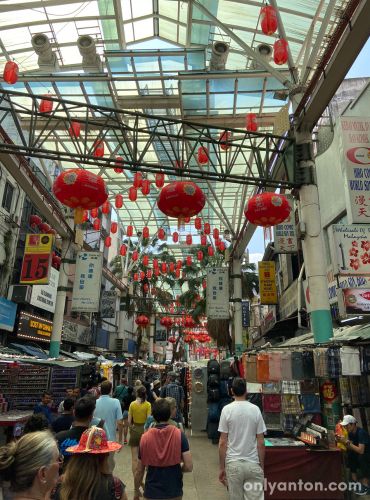
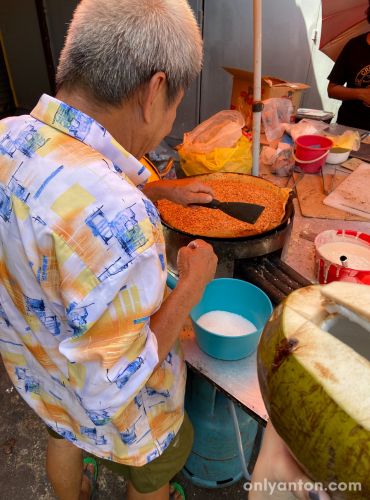
Central Market and Petaling Street offer a taste of the city’s heritage and a glimpse into its multi-layered identity. These markets are more than just tourist attractions. They’re living reminders of the diverse communities that shaped Kuala Lumpur into the dynamic city it is today.
KL’s Nightlife and Street Food
No visit to Kuala Lumpur is complete without experiencing its superb nightlife and street food scene. There’s no better place to do this than the Jalan Alor Night Food Court and the bustling Bukit Bintang district. These areas are a feast for the senses—brimming with sights, sounds, and, most importantly, flavours.
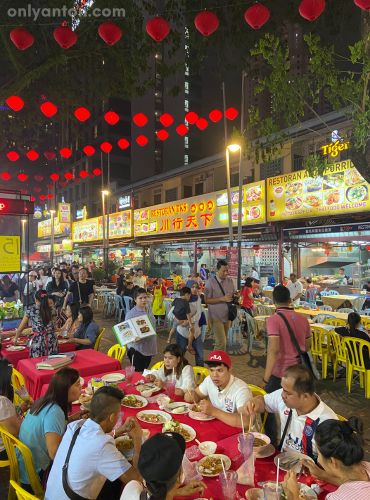
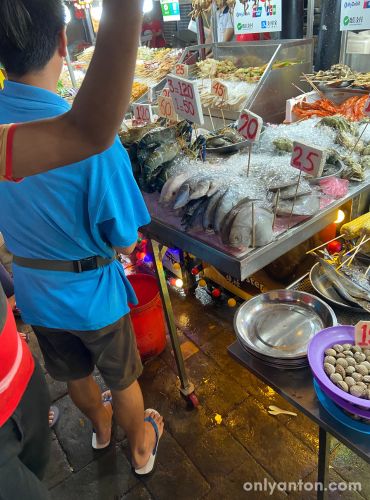
Jalan Alor Night Food Court
This area has one of the best-known food streets in Kuala Lumpur, and it’s not hard to see why. As you step onto the street, you’re hit with the heady aromas of sizzling meats, grilled seafood, and spices wafting through the air. Colourful stalls line the street, each hawking its own version of local delicacies. Neon lights glow overhead, and the lively chatter of locals and tourists alike fills the space. It’s a buzzing, festive atmosphere that feels like a celebration of Malaysian cuisine.
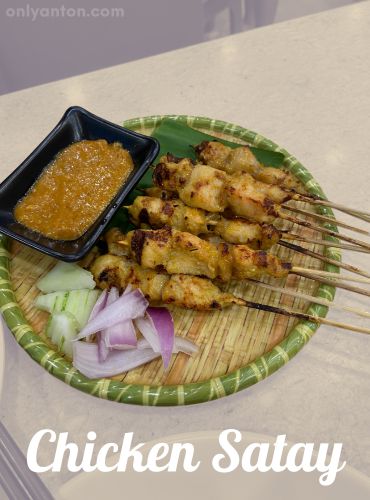
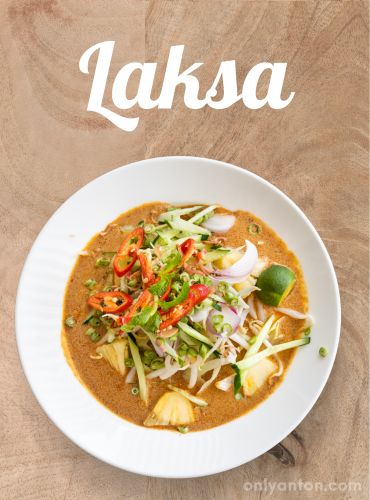
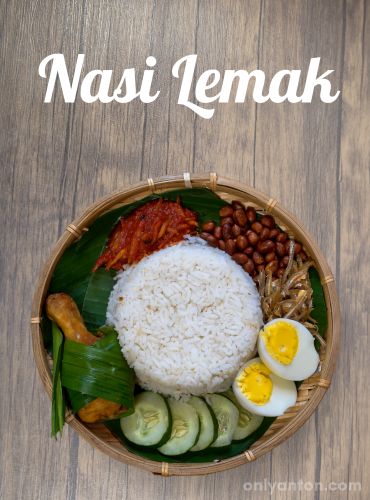
During my visit, I tried several dishes, starting with chicken satay, skewers of marinated meat grilled to perfection and served with rich peanut sauce. From there, I moved on to rendang, a slow-cooked beef stew infused with spices and coconut milk. Laksa is a spicy noodle soup with a complex, tangy broth that’s a blend of Malay and Chinese influences. Of course, I couldn’t pass up the chance to have Malaysia’s national dish, nasi lemak. It is a simple but delicious combination of coconut rice, fried anchovies, peanuts, a boiled egg, and spicy sambal.
Durian
The true test for any food adventurer in Kuala Lumpur is trying durian—the notorious “king of fruits.” I had tried durian twice before, in China, and to be honest, I wasn’t a fan. However, one of my personal rules for food is that I’m not allowed to “hate” a food until I’ve tried it a minimum of three times. So, I decided to give it one last shot in KL. The smell hit me first—strong, pungent, almost like a mix of overripe fruit, onions, and gasoline. With each bite, the creamy texture contrasted sharply with the overpowering flavour. It tastes sweet but with a sharp, almost bitter aftertaste that lingered on my tongue. It’s a pity because I really wanted to like it. After three tries, though, I think I can safely say durian and I are not meant to be friends.
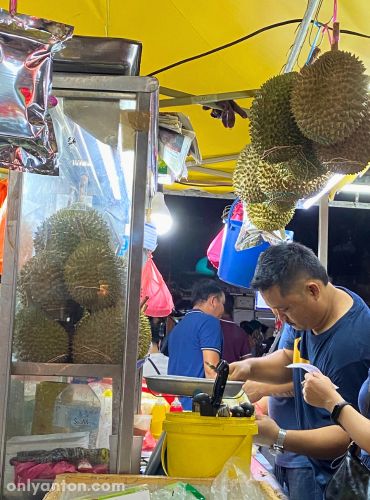
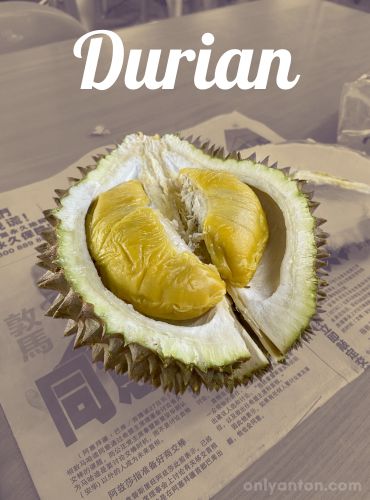
Personal Tip
If you’re overwhelmed by the sheer number of options, I recommend sampling smaller portions or sharing dishes with a travel companion. This way, you can taste a variety of different foods without feeling too full or committing to one large meal.
Bukit Bintang
Just a few blocks away from Jalan Alor is the Bukit Bintang area. This thronging district is a paradise for nightlife enthusiasts and food lovers alike. Known as the entertainment and shopping hub of Kuala Lumpur, Bukit Bintang is full of life both day and night. It’s a shopper’s delight by day, with massive malls like Pavilion KL and Starhill Gallery offering everything from high-end luxury brands to local boutiques. By night, the area transforms into a packed scene of bars, cafes, and restaurants. Here you can indulge in a cocktail, listen to live music, or people-watch as you stroll along the brightly lit streets.
One of the best ways to experience Bukit Bintang is to wander around with no particular destination in mind. Take in the eclectic mix of street performers, the hustle and bustle of locals and tourists, and the animated atmosphere. Whether you’re in the mood for a casual meal at a street-side stall or you want to hit a rooftop bar with a view of the city, Bukit Bintang has something for everyone.
Safety Note
While Bukit Bintang is generally safe, it’s always a good idea to keep an eye on your belongings, especially in busy areas. The district can get quite crowded, and it’s better to be cautious, especially late at night.
For anyone wanting to experience Kuala Lumpur’s pulse after dark, Jalan Alor and Bukit Bintang are the places to be. Whether you’re looking to savour the best street food in the city or soak in the vibrant nightlife, these neighbourhoods are guaranteed to leave a lasting impression.
KL’s Festivals and Celebrations
Kuala Lumpur comes alive throughout the year with a dazzling array of festivals and celebrations. Each festival reflects the city’s unique blend of cultures and traditions. From Chinese New Year to Hari Raya Aidilfitri, these events are a visual spectacle and a rich sensory experience, complete with music, dance, and food. Experiencing a festival in Kuala Lumpur is like stepping into a living portrait of Malaysia’s multicultural identity.
Chinese New Year
One of the most prominent celebrations in Kuala Lumpur is Chinese New Year. Typically, the festival falls between late January and early February. During my visit, I was fortunate enough to witness a traditional Chinese Lion Dance on the first day of the Lunar New Year. With rhythmic drumbeats and the clash of cymbals, multiple performers animated the two colourful lion costumes, moving with grace and precision. The lions’ playful yet powerful movements are believed to ward off evil spirits and bring good luck and prosperity for the year ahead. The performance was captivating, and the crowd’s energy made it even more special. It’s an unforgettable sight, filled with joyful cheers, firecrackers, and red lanterns adorning the streets. If you visit Kuala Lumpur during Chinese New Year, head to Petaling Street or the Thean Hou Temple to catch these performances in their full glory.
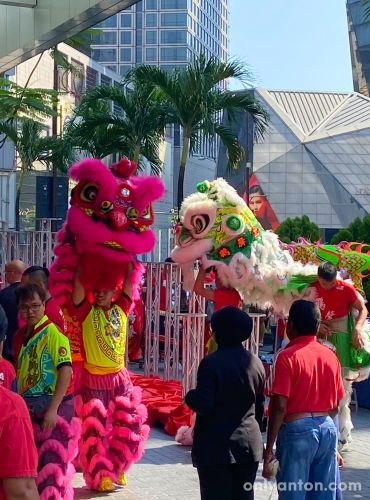
Hindu Festival of Lights
Next, there’s Deepavali, also known as Diwali, the Hindu Festival of Lights, celebrated by the city’s Indian community. Held in October or November, Deepavali symbolizes the victory of light over darkness and good over evil. The festival is marked by the creation of kolams—intricate, colourful designs made from rice flour or powder—that adorn the entrances of homes and temples. In Kuala Lumpur, one of the best places to experience Deepavali is Brickfields, also known as Little India. During the festival, the area is transformed into a riot of colours, with decorations, shimmering lamps, and the scent of Indian delicacies like murukku and laddoo filling the air. Walking through the festooned streets, you’ll feel the warmth and joy of the celebration as families gather to light oil lamps and exchange sweets. It’s a perfect opportunity to immerse yourself in the sights, sounds, and flavours of the Indian community.
Muslim Eid
Hari Raya Aidilfitri, known as Eid in other parts of the world, marks the end of the holy month of Ramadan. It is a significant festival for Kuala Lumpur’s Malay Muslim community. The celebration begins with prayers at mosques. The rest of the day is filled with family gatherings and feasting. An important tradition is the open house custom. Families invite friends and neighbours—regardless of religion or ethnicity—to share a meal. To experience the festival’s full local flavour, I recommend visiting Kampung Baru, a Malay enclave in the heart of Kuala Lumpur. The neighbourhood is known for its traditional wooden houses and authentic Malay cuisine, such as ketupat (rice cakes wrapped in palm leaves), lemang (glutinous rice cooked in bamboo), and rendang. If you’re in KL during Hari Raya, the welcoming spirit of the open house tradition is a beautiful reminder of Malaysia’s inclusiveness.
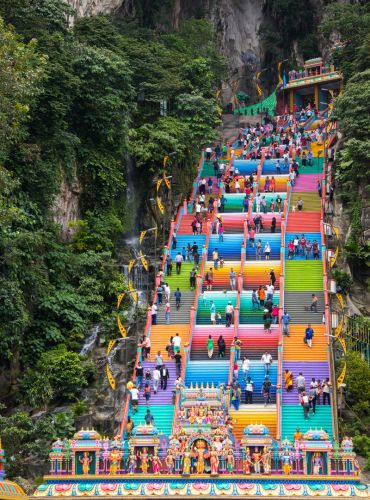
Tamil Thaipusam
Another significant celebration is the annual Thaipusam Festival, which takes place in late January or early February. The festival is a dramatic display of devotion by the Tamil Hindu community, honouring Lord Murugan. The most famous celebration in Kuala Lumpur happens at the Batu Caves, just outside the city. Thousands of devotees carry elaborately decorated kavadi (burdens). Pilgrims ascend the 272 steps leading to the cave temple as a form of penance or fulfillment of a vow. The sight of devotees, some in deep trance, along with the sound of chanting and rhythmic drumming, is mesmerizing and deeply spiritual. Even as an observer, the intensity and reverence of the event are humbling. If you have the chance, visit Batu Caves during Thaipusam. It is an experience that will stay with you for years to come.
Personal Tip
Try to time your visit around one of these festivals to experience the vibrant cultural celebrations firsthand. It’s a wonderful way to gain deeper insight into the city’s rich traditions and to connect with the local community in a meaningful way.
Conclusion
Despite its relatively small size, Kuala Lumpur is a city teeming with vibrant contrasts and unique experiences. From the spiritual serenity of the Sri Maha Mariamman and Guan Di Temples to the modern marvels of the Petronas Towers and KLCC Park, the city seamlessly blends the old and the new, offering a heady blend of cultural, architectural, and culinary delights. Add to this the bustling Central Market, the animated street food scene of Jalan Alor, and the lively festivals throughout the year, and you have a destination that invites visitors to explore every corner.
For me, this trip to Kuala Lumpur holds an even more profound significance. It was my last journey before the world shut down during the pandemic. For three long years, I found myself unable to travel, “locked down” under a strict zero-COVID policy in China. This experience made me realize how much I had taken the freedom to travel for granted. Upon returning to Canada and finally regaining that freedom, I felt inspired to share my passion for travel through this blog. In a way, the inspiration for Only Anton was born from the loss and eventual restoration of that freedom.
The desire to see and share more of the world led me to start anew with my first post-pandemic trip to Nicaragua in March 2023. As I continue my journey, I hold the memory of Kuala Lumpur close as a reminder of both my previous experiences and the endless possibilities ahead.
Kuala Lumpur may be a small city, but it is one that rewards those who choose to linger, take their time, and explore at their own pace. Each visit, each new street, and each festival reveals yet another layer of its multifaceted charm.
What About You?
What was your most surprising or delightful experience in Kuala Lumpur? Was it discovering a hidden temple, sampling a new dish, or simply wandering through the streets? I’d love to hear about your favourite foods, temples, or places to see. Share your experiences in the comments below!
And if you haven’t been yet, what aspect of Kuala Lumpur would you most like to explore? Let me know, and don’t forget to return to Only Anton for more explorations of other fascinating cities around the world.
Further Reading and Resources
Explore these recommended books, articles, and resources to gain deeper insights into Kuala Lumpur’s dynamic culture, history, and cuisine.
Related Posts on Only Anton
- Exploring Boracay: A Jewel of the Philippines: Find out why Boracay is a must-visit destination. Learn about attractions, hidden gems, and local cuisine in this comprehensive travel guide.
- Discover Hong Kong: Best Things to See and Do: Discover Hong Kong’s iconic landmarks, natural beauty, vibrant districts, cultural sites, and delicious food.
Books and Articles
- Lonely Planet Malaysia, Singapore & Brunei (16th ed., 2024) by Winnie Tan, Lindsay Brown, and Marco Ferrarese: A comprehensive guidebook with detailed information about Kuala Lumpur, as well as travel tips and cultural insights for exploring the region. Look for it online, borrow it from a library, or get your copy here.
- A History of Malaysia by Barbara Watson Andaya and Leonard Y. Andaya (2017)
- An in-depth look into the history of Malaysia, providing context to Kuala Lumpur’s multicultural society and rich heritage. Find it online, at a local library, or get a copy here.
- The Food of Malaysia by Wendy Hutton (2022): A culinary exploration of Malaysia’s diverse cuisine, featuring authentic recipes, cultural insights, and vivid descriptions of traditional dishes. Look for it online, borrow it from a library, or get your copy here.
Websites
- Malaysia Truly Asia: The official Malaysia travel site, featuring guides to Malaysia’s cities, cultural events, and travel tips.
- Time Out Kuala Lumpur: A popular city guide providing up-to-date recommendations on where to eat, what to do, and current events.




